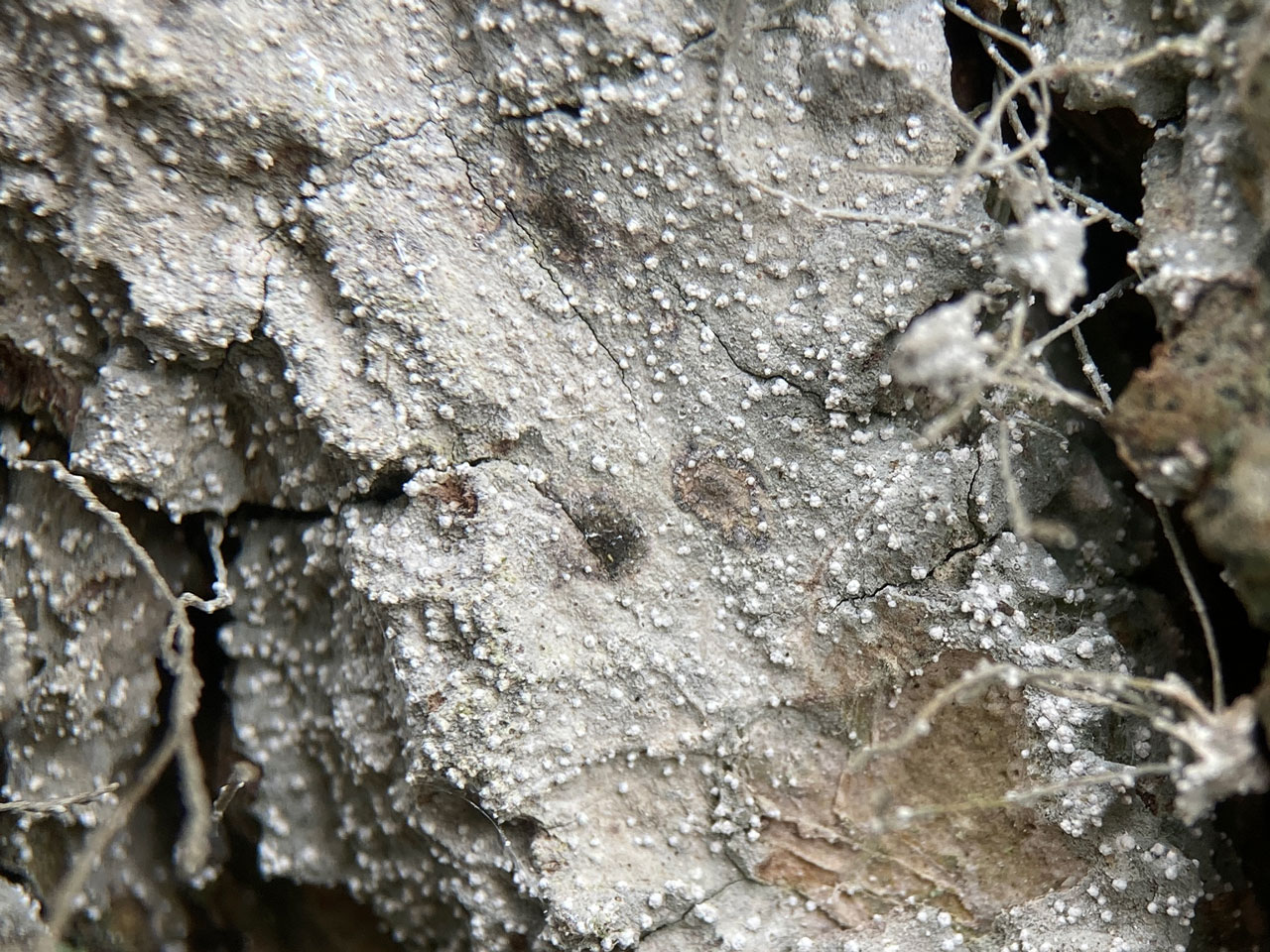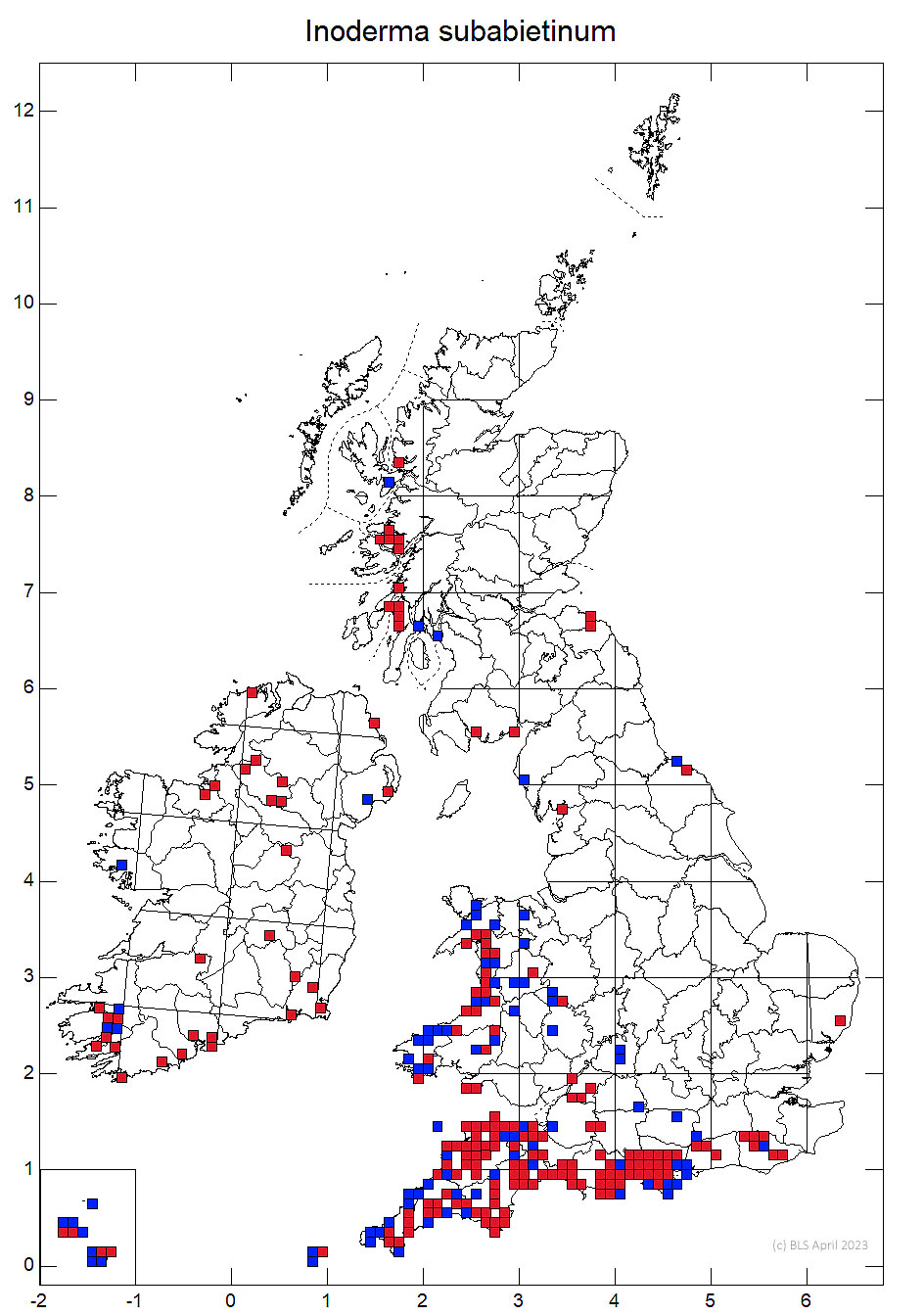Inoderma subabietinum forms large whitish grey spreads, speckled with frequent densely white pruinose pycnidia, on dry bark of usually older trees in the south west. These strongly resemble Lecanactis abietina, but well developed material has a different look, mainly from the wider fluffier pruinose pycnidia. Spot tests and conidia size will separate less well developed material.
Thallus 20–80 μm thick, effuse, thin, whitish grey, ± continuous, scurfy, cracked. Apothecia unknown. Pycnidia 0.18–0.5 mm diam, numerous, crowded, sessile, globose, cylindrical or widened above, black (K+ dark greenish) but densely white- pruinose and often with a pale yellowish conidial mass extruded from the wide ostiole; conidia cylindrical to ellipsoidal, 3.7–5 × 1.2–1.7 μm. Pycnidial pruina C–, K+ lemon- yellow; thallus C–, K+ lemon-yellow, K/UV+ mauve, KC–, Pd–, UV+ bluish or yellowish white (confluentic, 2′-O-methylmicrophyllinic and lepraric acids, and ‘byssaceum-unknowns’ [in pycnidia]).
Can be confused with sterile morphs of Lecanactis abietina which has larger conidia and K–, C+ red pycnidial pruina and with Opegrapha vermicellifera, which has K– pycnidial pruina, K– (not ± greenish) pycnidial walls and slightly longer conidia. The K/UV+ mauve (confluentic acid) spot test is diagnostic, especially if combined with observing the crystals formed when irrigating a section with sodium hydroxide (Lecanactis abietina K/UV+ bright blue, no crystals with sodium hydroxide).
Often forming extensive patches on dry, usually shaded, less acidic bark of (mostly) old Oak, less often Yew, Holly, Birch and Pine, occasionally on lignum, usually low down on the trunk; also on Ivy stems and decaying fern fronds under dry overhangs and old Heather stems. Very rarely on rock. More mobile near the coast and becomes more strictly confined to veteran trees inland. Often a component of Ancient Dry Bark Communities (Lecanactidetum premneae)

S. & W. Britain from Hampshire & Cornwall, Wales, to W. Scotland, very rare on the E. coast (N.E. Yorkshire, Suffolk, Berwickshire, E. Lothian), occasional in Ireland, absent from the central plain.
Locally abundant near the coast in the south west, but becoming scarce and more veteran tree dependant to the north.
Britain: Notable, International Responsibility species
Scotland: Priority Taxon for Biodiversity in Scotland
Cannon, P., Ertz, D., Frisch, A., Aptroot, A., Chambers, S., Coppins, B. J., Sanderson, N. A., Simkin, J. & Wolseley, P. (2020) Arthoniales: Arthoniaceae, including the genera Arthonia, Arthothelium, Briancoppinsia,Bryostigma, Coniocarpon, Diarthonis, Inoderma, Naevia, Pachnolepia, Reichlingia, Snippocia, Sporodophoron, Synarthonia and Tylophoron. Revisions of British and Irish Lichens 1: 1 - 48
Text by Neil Sanderson based on Cannon et al (2020)

